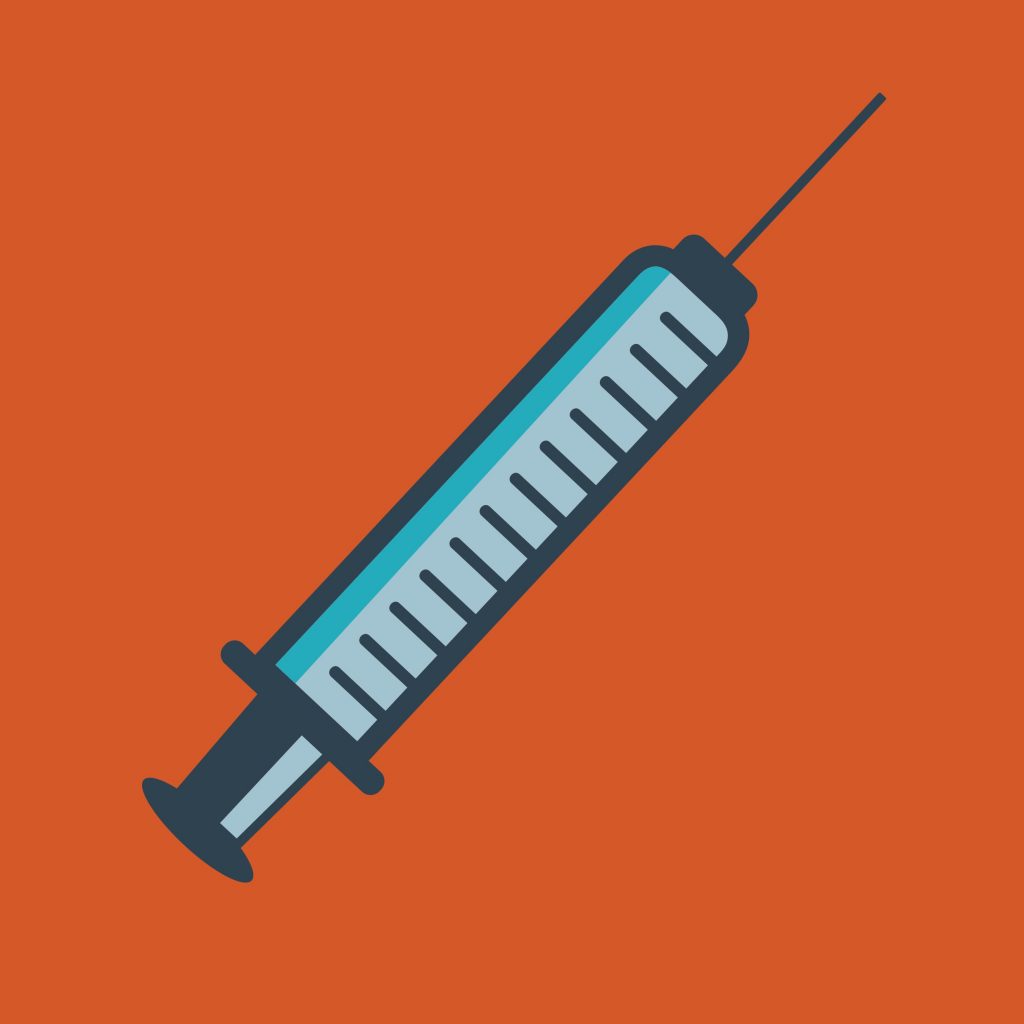Posts tagged HIV/AIDS

The Progression of HIV: How the Infection Takes Over Your Body
It’s important to know every aspect of HIV, in particular for those infected with the virus. HIV is a volatile disease and an epidemic that has claimed the lives of over 35 million people. Understanding how the disease works can help patients make better decisions when it concerns their health. That’s why it’s imperative that patients are informed because over time and without proper treatment, HIV develops into something much worse. Find out everything you need to know about the progression of HIV and how you can protect yourself.
Laying Out the Progression of HIV
HIV progresses in three stages. As the disease moves from one stage to the next, it becomes worse over time. Eventually, the disease completely eradicates the immune system, leaving the body vulnerable to other diseases and infections. Let’s walk through the different stages of the virus and what it means for HIV-positive individuals.
Stage 1: Acute HIV Infection
The progression of HIV starts soon after infection. The first stage of the virus is known as acute HIV infection. During this stage, symptoms aren’t noticeably apparent, and for the first 2 to 4 weeks, people may be unaware that they have contracted the disease. There is a chance that HIV-positive individuals experience flu-like symptoms. These symptoms are a telling sign for anyone who has recently participated in risky sexual activity or drug use. It usually means that they have contracted the virus and it has start to multiply, causing it to spread within the body and destroy the immune system.
Stage 2: Clinical Latency
As defined by the CDC, Clinical Latency is the second stage of the virus. It is also known as asymptomatic or chronic HIV infection. While still active within the body, the HIV virus reproduces at low levels. Most people still do not show any symptoms of the disease by this point. However, it is important to note that one can still spread the infection to others. This stage is also a crucial period as the disease can evolve and become AIDS without proper treatment.
Stage 3: AIDS
AIDS is the final stage of HIV. This is when the number of CD4 cells in the body, which aid the immune system, are at their lowest. AIDS grants other infections and diseases the opportunity to damage the body severely. Your symptoms often depend on the type of illness or opportunistic infection you contract. This stage can occur when one has not properly taken medication during the first or second stage of the virus. Patients with AIDS who continue to ignore treatments usually live for three years.
Slowing Down the HIV Infection
While there is no cure for HIV, scientists are working diligently every day to find one. Their research has led to advancements in HIV medications. By taking this treatment, patients can slow the progress of the disease. Some have even found success in keeping it at stage 2 for many years, preventing the transition to AIDS. For this treatment to be effective, patients must take the antiretroviral medications every day. If you are worried or concerned that you may have contracted HIV, contact an HIV specialist today and get tested as soon as possible.

Antiretroviral Drugs for HIV Link to Neurological Issues
In the fight against HIV, antiretroviral drugs are the strongest weapon we have. While these medications do not cure or kill the virus, they stop it from progressing any further. Unfortunately, this treatment is a combination of several different types of drugs. When combined, they slow down HIV. However, according to new research, they may also leave significant neurological damage.
The Risks of Antiretroviral Drugs
Like most drugs for serious conditions, antiretroviral drugs do have side effects. However, their ability to stop the progression of HIV to AIDS has outweighed any minor complications. To this day, they are so successful that patients with AIDS are a rarity.
Some patients have been known to experience appetite loss, lipodystrophy, diarrhea, fatigue, mood changes, nausea, and bone loss. Scientists are working to make these drugs stronger and safer for patients. With the right precautions, patients can even make the side effects less debilitating.
The Connection to Alzheimer’s Disease
At the University of Pennsylvania, research has implicated some antiretroviral drugs in the progress of Alzheimer’s disease. They suggest that protease inhibitors are the cause. Protease inhibitors are the drugs that work the best against HIV. Apparently, some of these drugs promote the growth of the peptide beta-amyloid, which damages neurons.
“Protease inhibitors are very effective antiviral therapies, but they do have inherent toxicities,” said Kelly Jordan-Sciutto, senior author on the study. “Our findings may cause us to rethink how we’re using these drugs and even consider developing an adjunctive therapy to reduce some of these negative effects.”
Through testing, they were able to identify that the drugs did indeed cause the reaction and damage to the neurons. However, they are working to inhibit the enzyme called BACE1, which leads to the production of the beta-amyloid.
“Targeting PERK and/or BACE1 could help contribute to a therapeutic approach to treat drug-associated cognitive disorders.” said Jordan-Sciutto.

Assessing the Average Life Expectancy With HIV
Studies have shown how a patient’s life expectancy with HIV has gotten better over the past 20 years. A lot of progress has been made. Researchers have found breakthrough treatment methods. And treatment itself has gotten more readily available.
It’s now well known that HIV is no longer a death march. Patients are now able to live fuller lives compared to previous decades. But how much longer are they expected to live for? And what factors lead to such vast improvements? Let’s take a closer look at that right now.
Life Expectancy With HIV Over The Years
From 1996-97, the death rate for HIV-positive people was at 7%. For people diagnosed with HIV, their average life span was typically 10 years. For 20-year-olds with the virus, it was higher. On average, they lived until 39. These numbers are now significantly better.
By 2006, that number jumped to 24 years. More than double the average from a decade previous. And a 20-year-old with HIV lived until 56 on average. That number is now in the high 60s. That leaves a separation of about 13 years between an HIV-positive and HIV-negative 20-year-old.
That’s the smallest gap in life expectancy between the two parties to date. It goes to show how far we’ve come in two decades. But that there’s still work to be done.
How Life Expectancy Has Improved
Antiretroviral Therapy (ART) was not yet readily available in 1996. That’s changed over the past two decades. As a result of there being easier access ART, it revolutionized HIV treatment. By preventing the virus from reproducing, ART is able to lower the viral load in the bloodstream. When successful, the viral load is so low that the virus is undetectable. HIV is still there. And it can still be spread to someone else. But there aren’t any symptoms.
Treatment is more effective across the board. Over half of those eligible for treatment are now receiving it. Also, Linkage to Care numbers continues to increase. The necessary work is being done.
In addition to being more effective, HIV treatment is now simpler, too. Fewer pills are needed. And there’s no longer a complex schedule to follow. A lot of patients can now take one pill a day and be fine. They work for a longer period of time and have fewer side-effects. It’s less likely for a patient to have to switch medications periodically.

How HIV Vaccine Development Looks in 2017
The new year looks to be a big one for HIV vaccine development. 2016 gave the HIV research community plenty to be optimistic about. A lot of tiny advancements were made. And when it comes to HIV, each tiny advancement is considered a huge win for those looking for a cure. Multiple encouraging trials took place last year. And researchers are looking to continue that momentum.
It’s helpful to keep up with the latest in HIV vaccine development. These small wins are cause for some hopeful celebration. With that in mind, here are a few of the most encouraging advancements around the world set to continue in 2017.
What’s Happening in HIV Vaccine Development in 2017
- Scientists in London have worked on a more radical vaccine that hasn’t been tried before. The vaccine is called the SAV001 vaccine. And it uses a killed whole virus as a way to get a response from the immune system. Diseases such as hepatitis A, polio, and rabies were treated this way. But never with HIV. In Canada, scientists recently used this in a trial for 33 HIV-positive patients. It was successful. Now they plan on testing 600 people who do not have HIV. This will test the vaccine’s ability to prevent the infection. The new trials for that study are due by September.
- South Africa has embarked on a study with 5,400 sexually-active men and women ages 18-35. This is only the seventh full-scale trial to take place for HIV. The vaccine being used in South Africa is similar to the one tested in Thailand that started back in 2003. The rate of infection was 31% lower than the group that got the placebo in the Thailand study. So, South Africa is looking to get that number up to 60%.
- Another vaccine is set to start this year in California. It’s inspired by the International AIDS Vaccine Initiative, Scripps, and La Jolla Institute. Unlike the other vaccines, this one is not expected to defeat HIV by itself. But it expects to build on specific immune cells that nearly all humans have. The vaccine’s goal is to generate those cells fast enough to stop the virus in its tracks.
As you can see, many vaccines are in the work to get rid of HIV once and for all. 2017 has a lot of promising studies in the works. And in the upcoming years, we’re bound to see more progress.

Inspirational HIV Quotes That Promote Positivity
For this post, we’ve decided to do something a little different and share our favorite inspirational HIV quotes. Living with HIV is a day-by-day challenge. Because of this, a positive mindset is important. High anxiety and depression have a strong effect on HIV patients. More so than a regular patient.
People with HIV want to be treated with kindness and respect. Just like everyone else. Telling them as much can go a long way. So, with that in mind, here are just a few of some of the most inspirational HIV quotes.
Inspirational HIV Quotes
- “Being seen does have value. I have the support of my boyfriend, my great friends, and my loving parents. Many do not and this is, in part, for them.” – Olympian Ji Wallace on having HIV.
- “We need to band together as a unit every day, especially to conquer the strength of the AIDS virus.” – Actor Dustin Hoffman, on combatting the spread of HIV/AIDS.
- “HIV does not make people dangerous to know, so you can shake their hands and give them a hug: Heaven knows they need it.” – Princess Diana, on getting rid of the HIV stigma.
- “Sick people, particularly those with serious conditions, greatly prefer the company of their friends and family to residence in a hospital or nursing home.” – Author and activist David Mixner, on the importance of a strong support system for sick people.
- “Three decades into this crisis, let us set our sights on achieving the “three zeros.” Zero new HIV infections, zero discrimination, and zero AIDS-related deaths.” – Ban Ki-Moon, secretary-general of the UN, calling for the cure of HIV and AIDS.
- “We live in a completely interdependent world, which simply means we cannot escape each other. How we respond to AIDS depends, in part, on whether we understand this interdependence. It is not someone else’s problem. This is everybody’s problem.” – Bill Clinton, discussing a united front in solving the AIDS crisis.
Some of the most iconic figures of the past century have shared inspirational words about HIV. Whether the person is royalty, a writer, or even a Hollywood star, they all share the same eagerness when it comes to fighting HIV. They believe that positivity, as well as working together, will help find a cure to end the virus once and for all.





